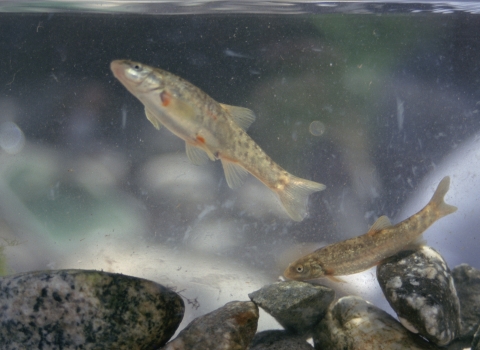SACRAMENTO, Calif. – Today, the U.S. Fish and Wildlife Service announced the availability of a final environmental impact statement for a proposed habitat conservation plan (HCP) and associated incidental take permit for Sierra Pacific Industries (SPI) forestlands in northern California. The final HCP will help conserve important habitat for California spotted owls and northern spotted owls while allowing for commercial timber harvest on SPI forestlands over the next 50 years.
“This plan goes to show what is possible when industry and government work together towards a shared conservation goal,” said Aurelia Skipwith, Director for the U.S. Fish and Wildlife Service. “The conservation steps SPI is taking today will help the California and northern spotted owl prosper into the future.”
In recent years, populations of both owl species have been impacted by the movement of barred owls into the region, as well as the loss of habitat due to catastrophic wildfires and drought. As part of the HCP, SPI will implement a variety of forest management activities to support California and northern spotted owls, including building strategic firebreaks to combat potential wildfires, establishing owl protection zones in areas where spotted owls are active or nesting and conducting barred owl research to help manage problematic populations.
“SPI’s forestlands are home to some of the highest concentrations of spotted owls in the state. With this plan we are committing to long-term conservation of the California and northern spotted owl species on our sustainably managed forests,” said Mark Emmerson, SPI chairman and CFO.
The final HCP covers more than 1.5 million acres of SPI forestlands in Amador, Butte, Calaveras, El Dorado, Lassen, Modoc, Nevada, Placer, Plumas, Shasta, Sierra, Siskiyou, Tehama, Trinity, Tuolumne and Yuba counties.
The final documents will publish in the Federal Register on July 31, 2020, and a record of decision will be signed no sooner than 30 days after the publication date. The documents will be available on www.regulations.gov by searching under the docket number FWS–R8–ES–2020–0073.
The U.S. Fish and Wildlife Service works with others to conserve, protect, and enhance fish, wildlife, plants, and their habitats for the continuing benefit of the American people. For more information about our work and the people who make it happen, visit our website. Connect with us via Facebook, Twitter, YouTube, and Flickr.
-FWS-



